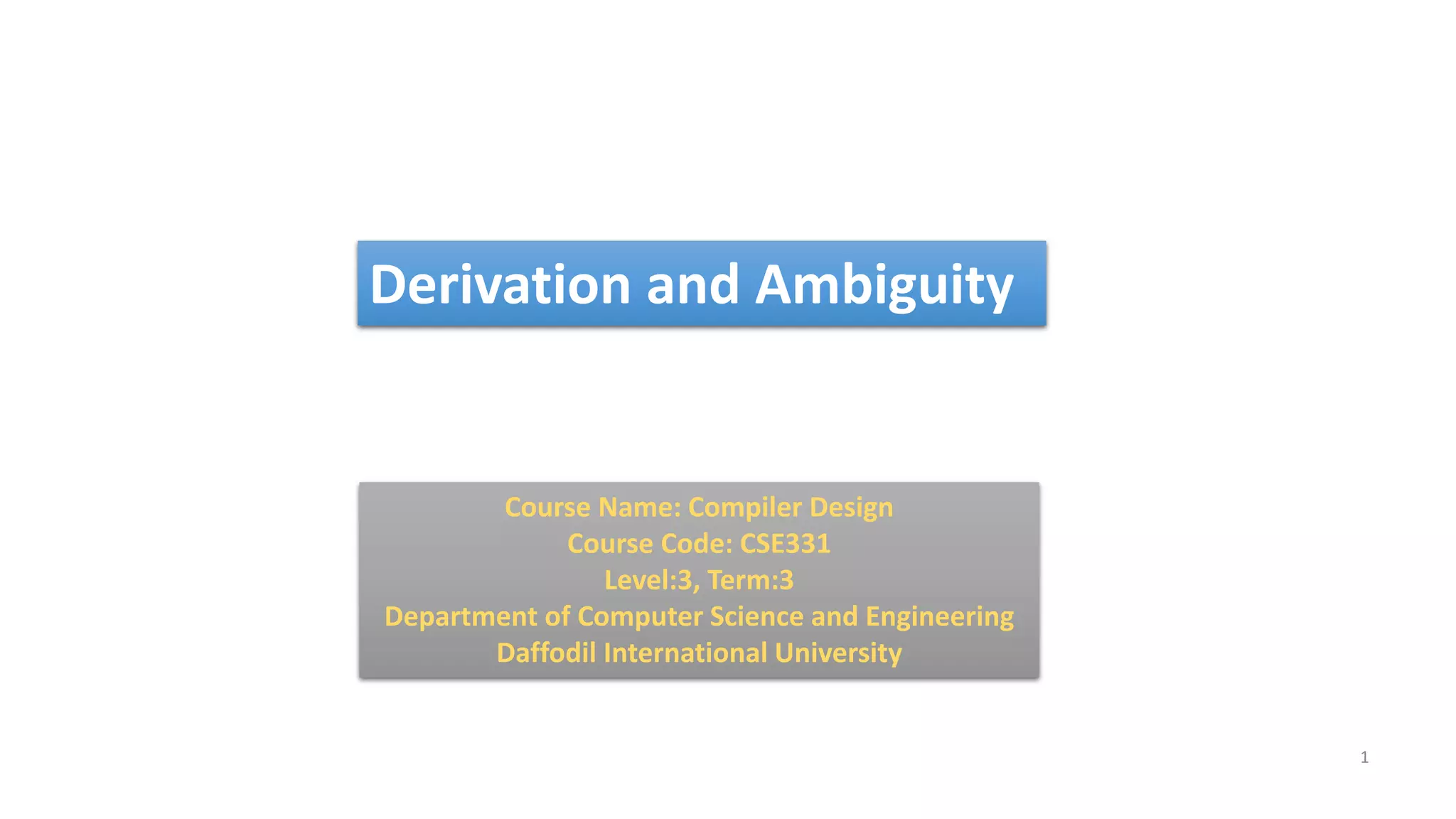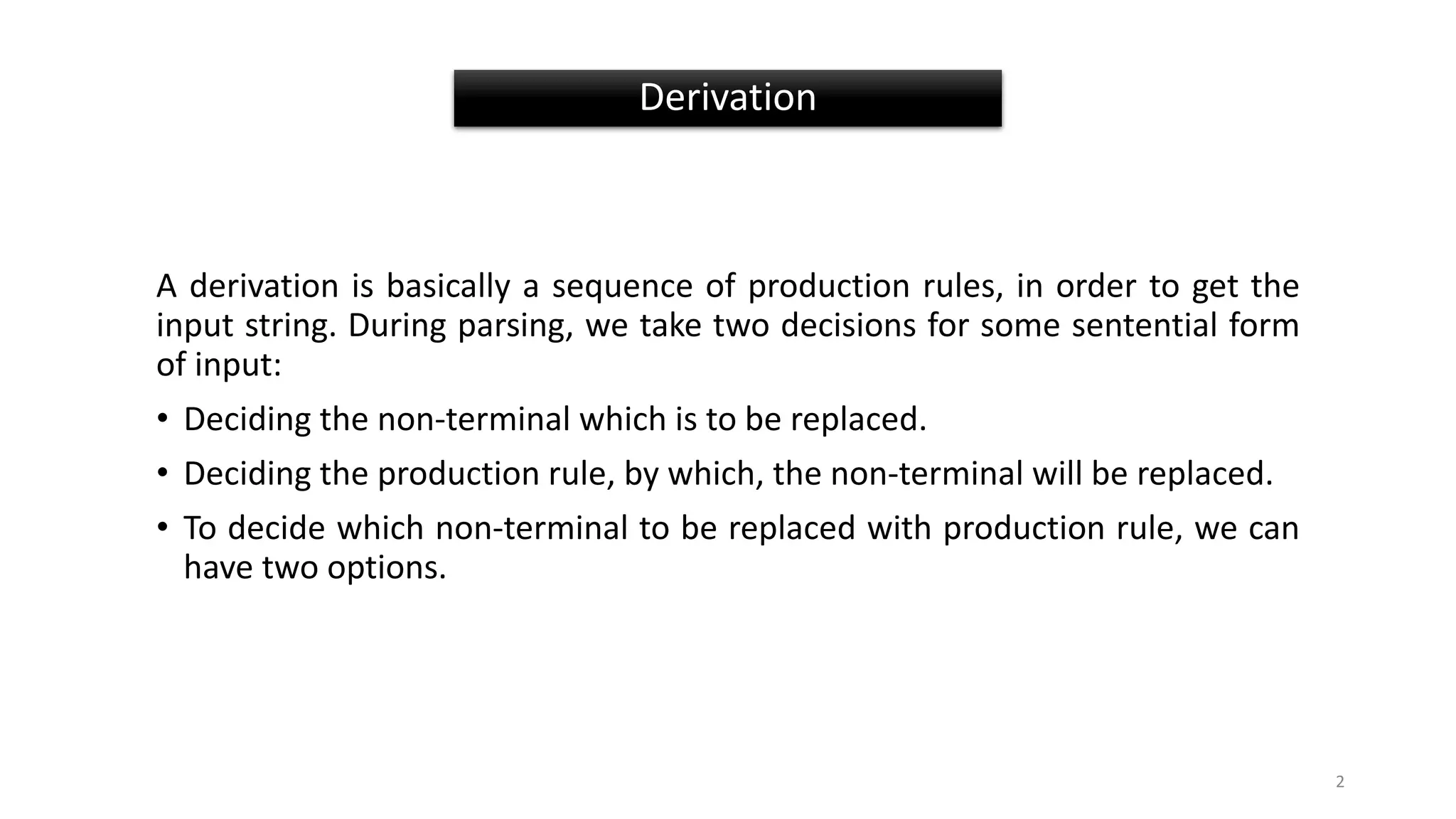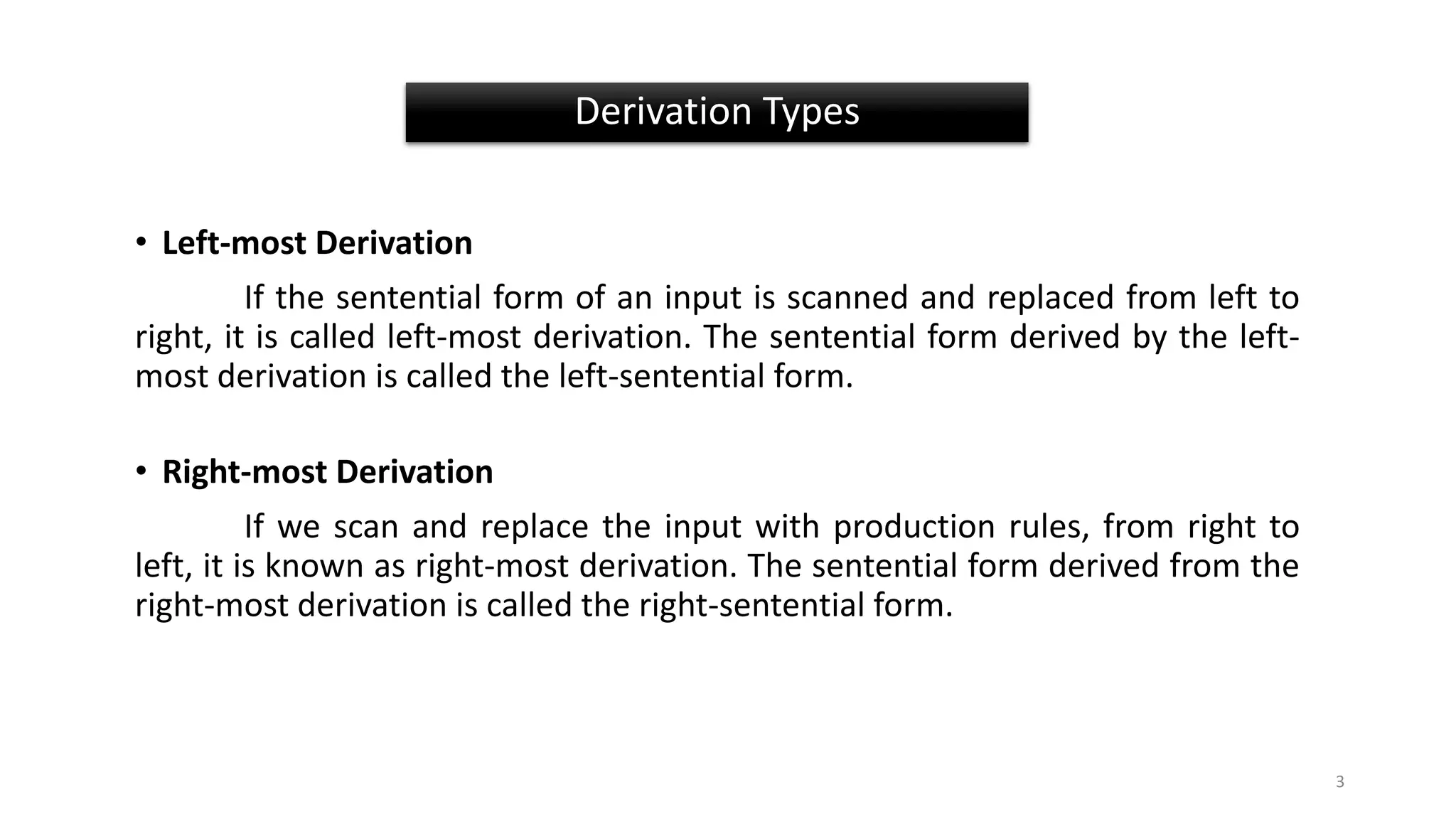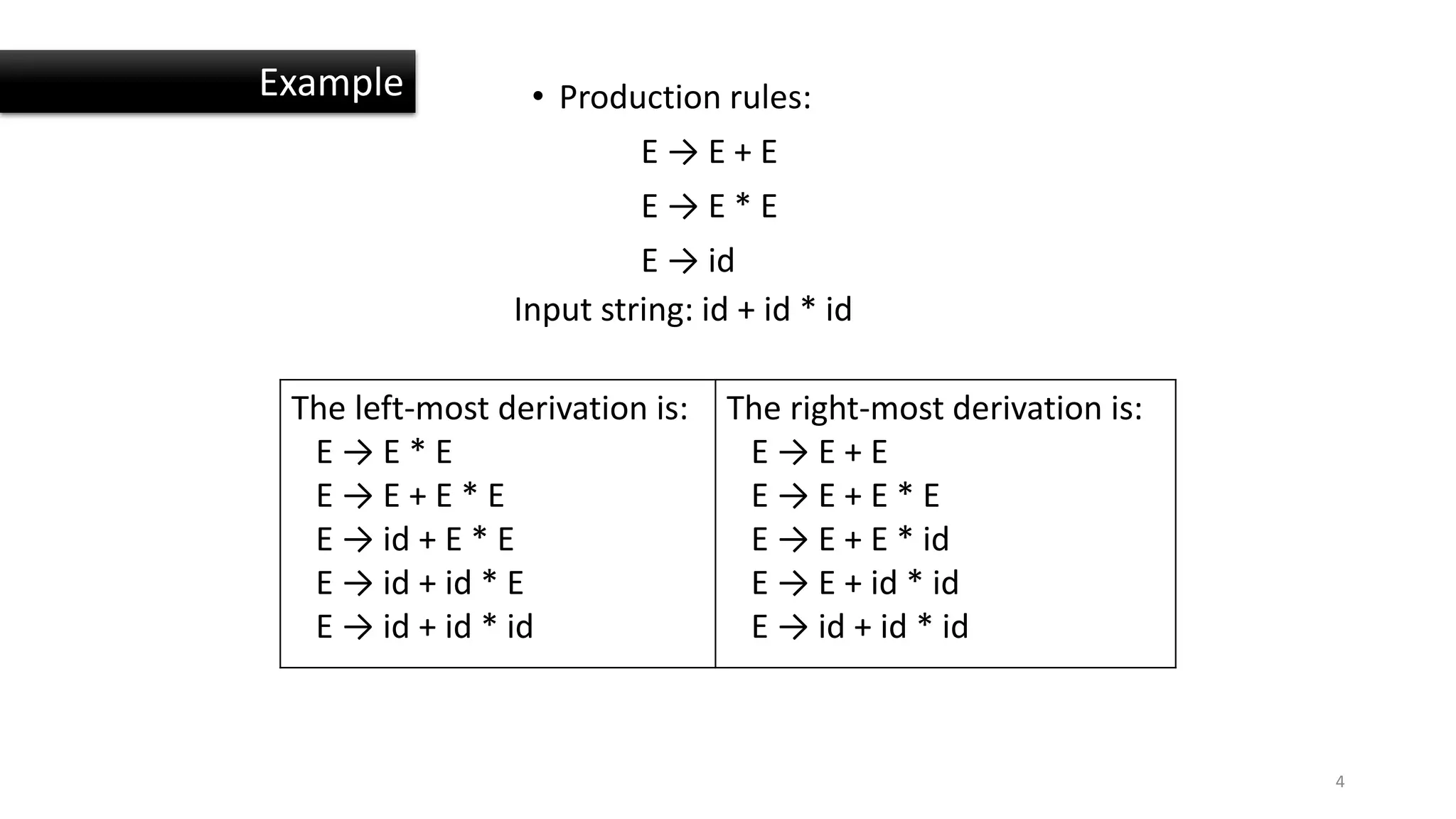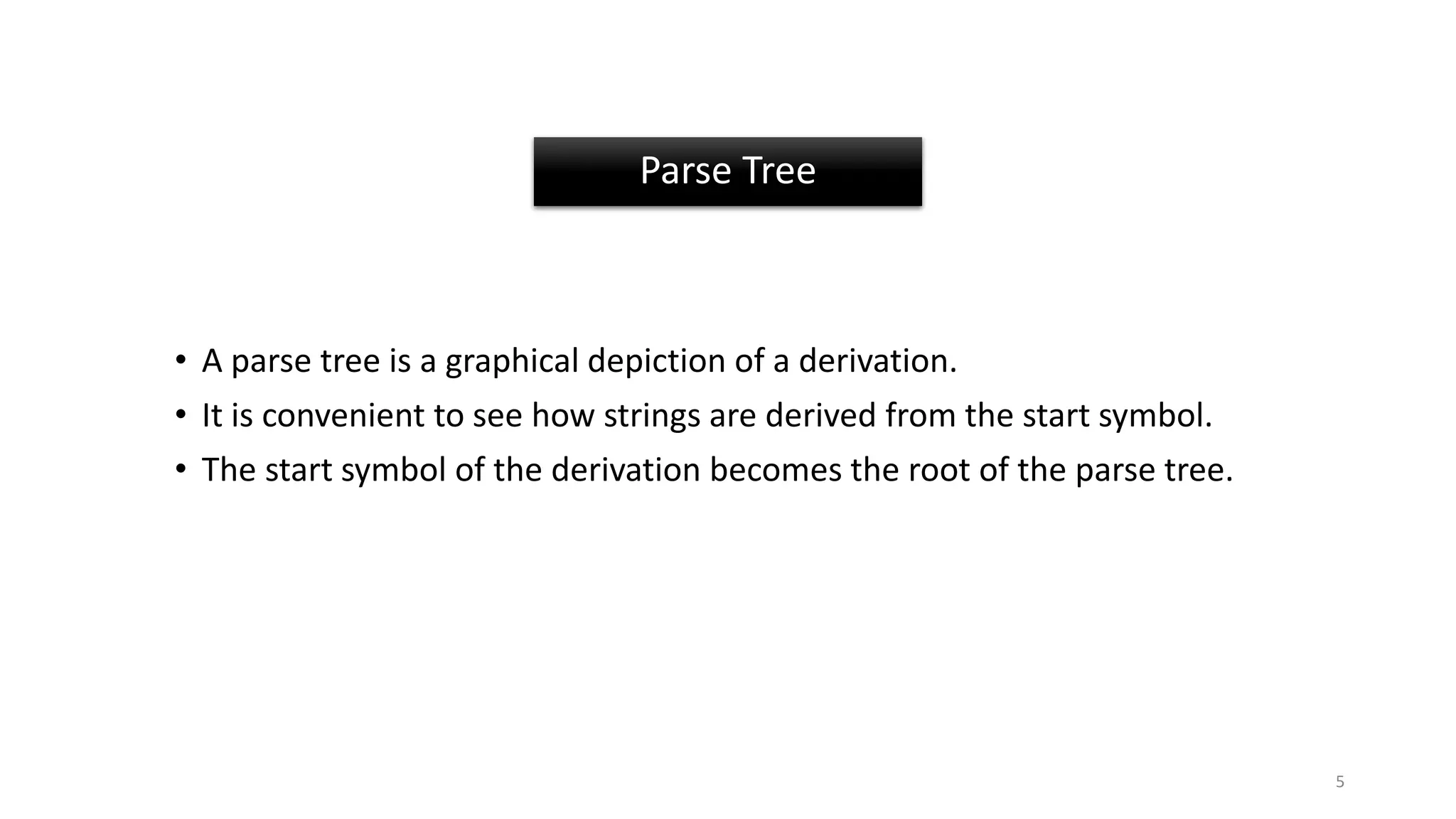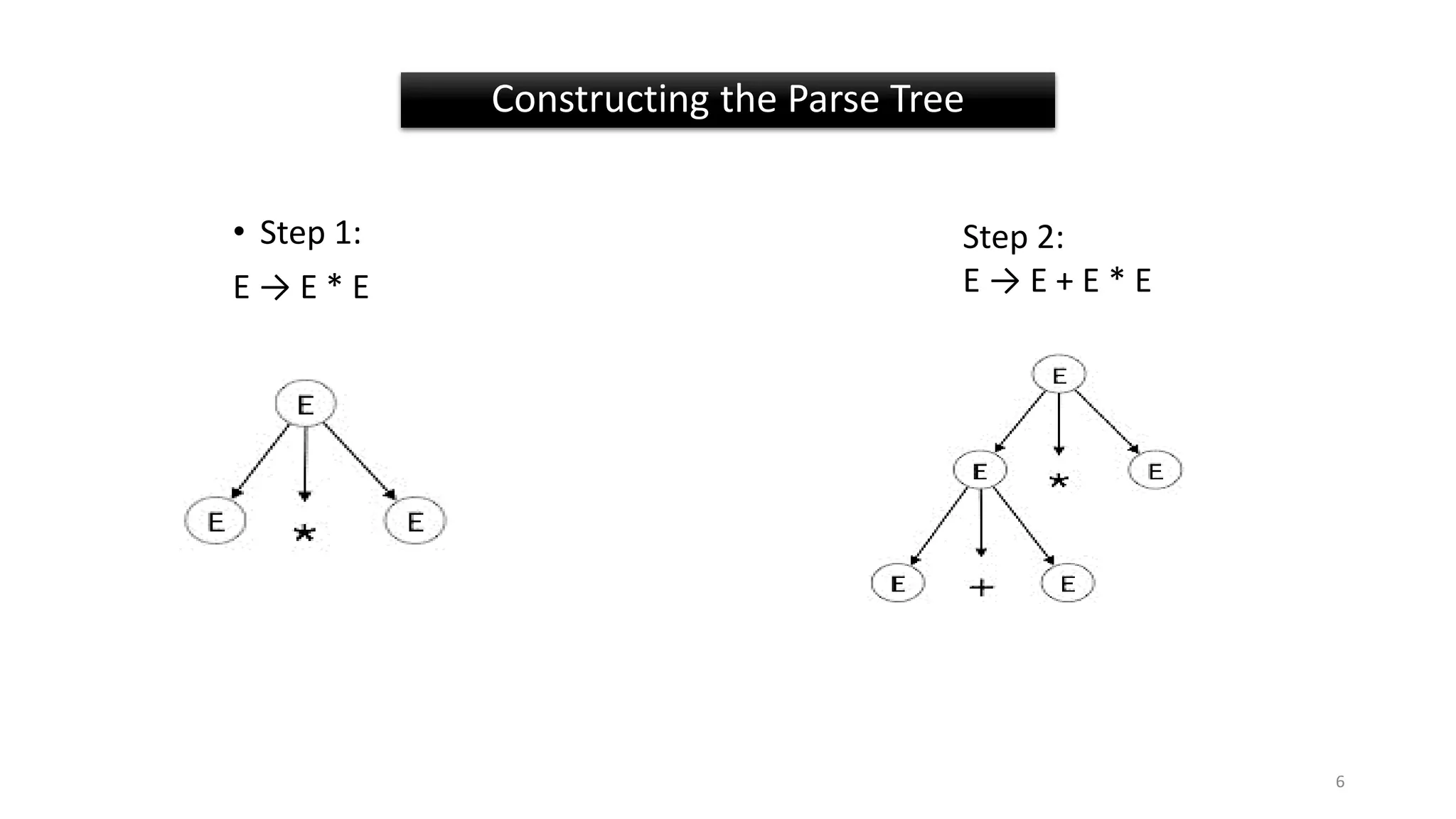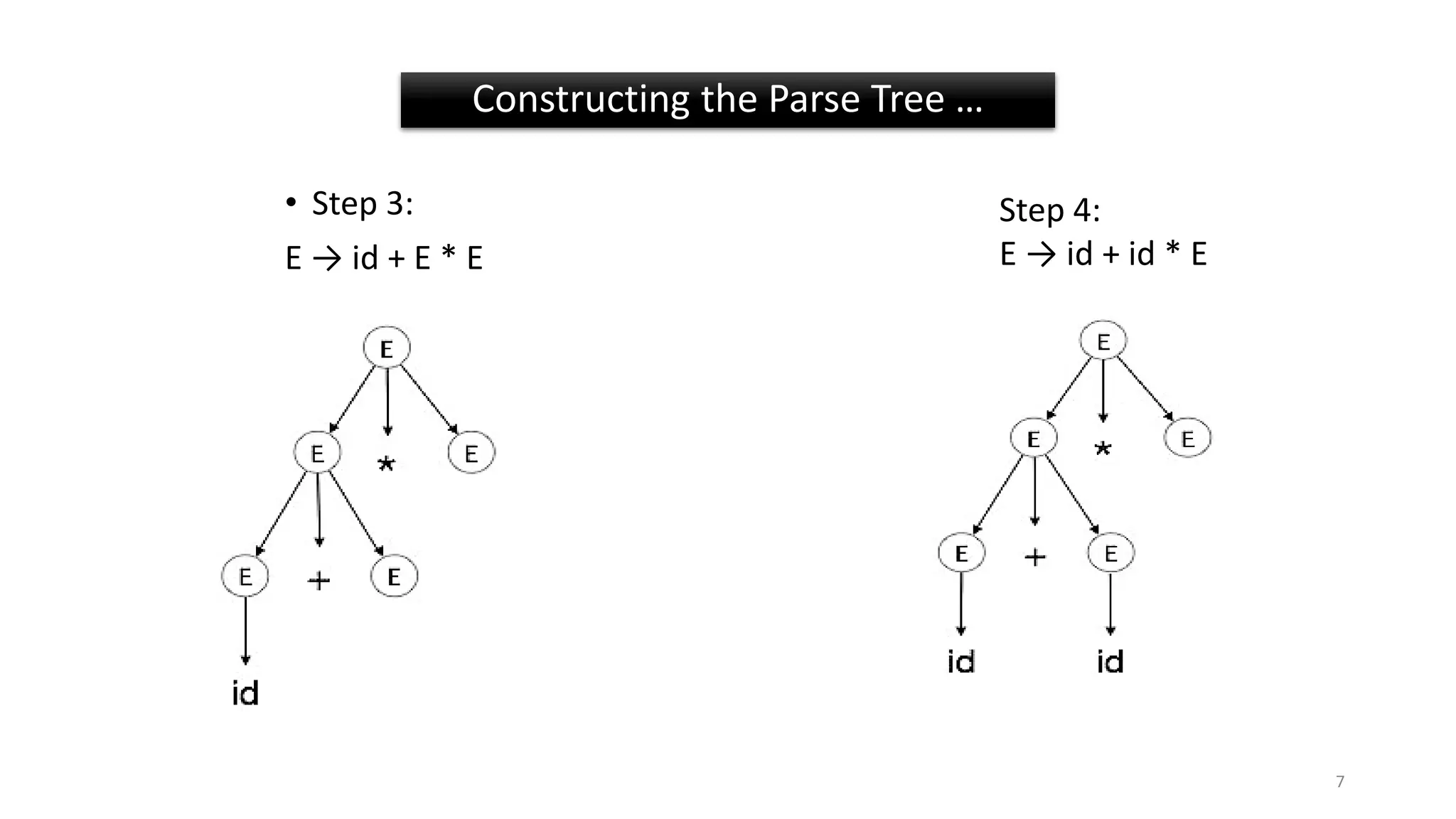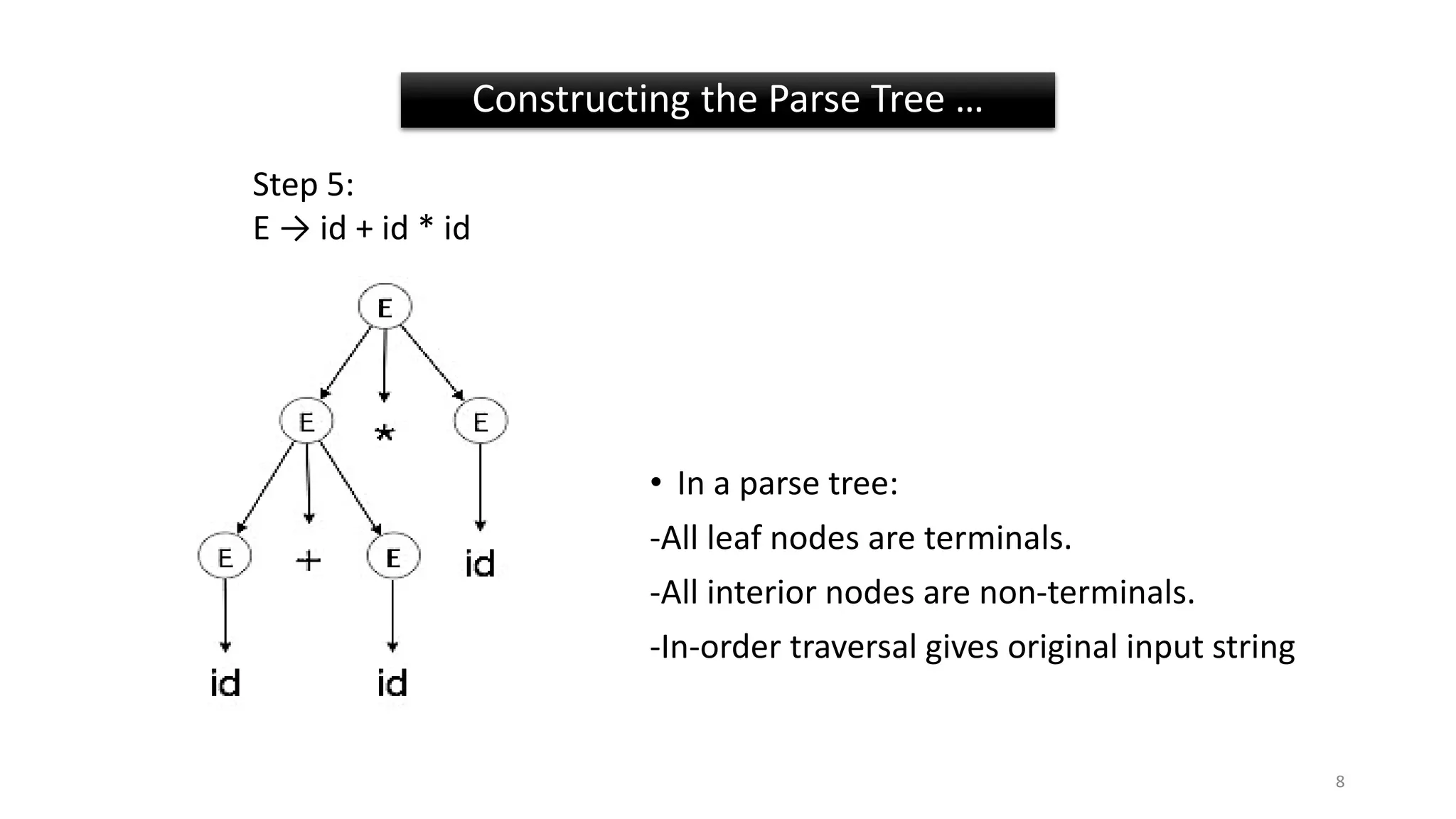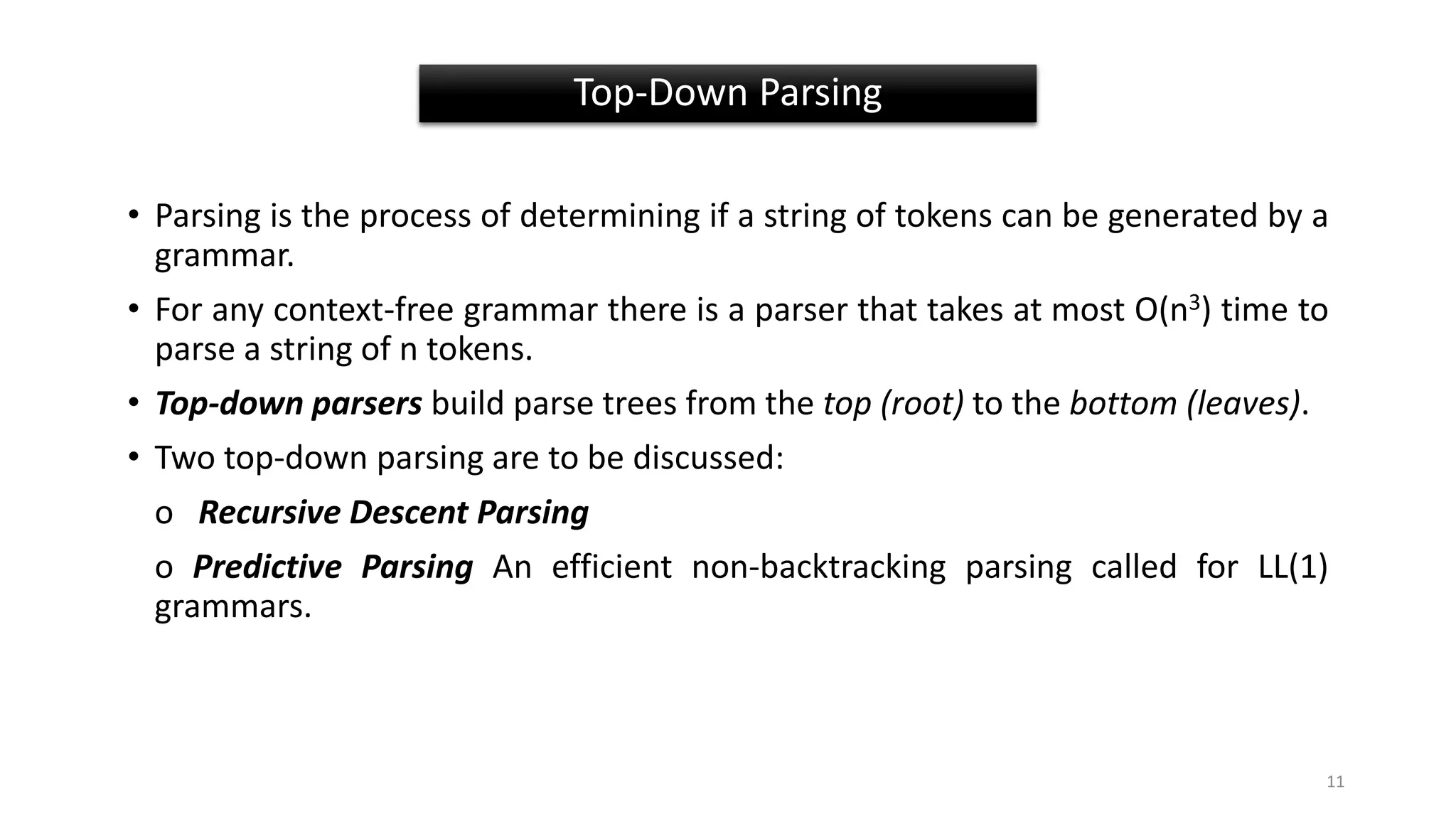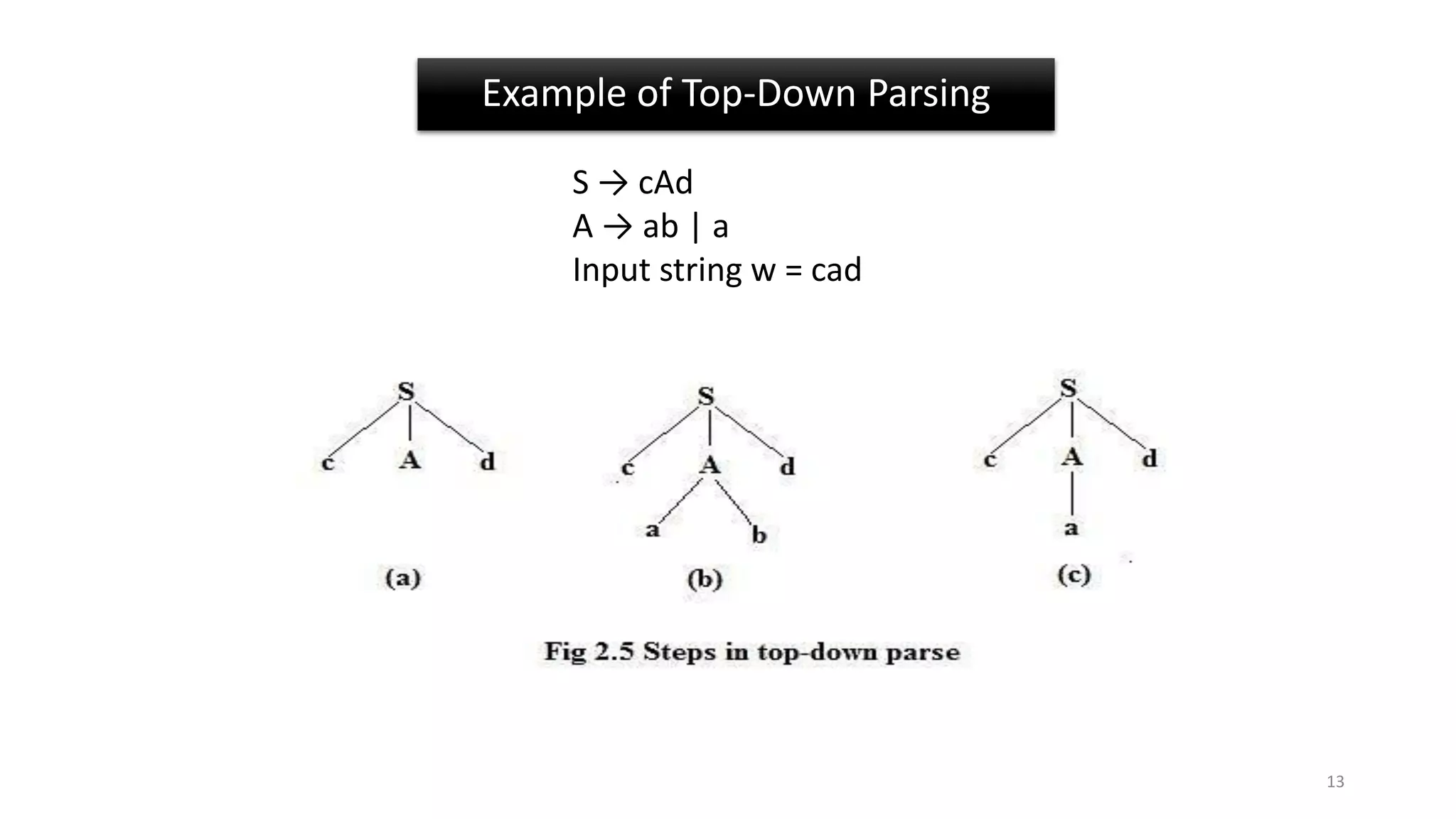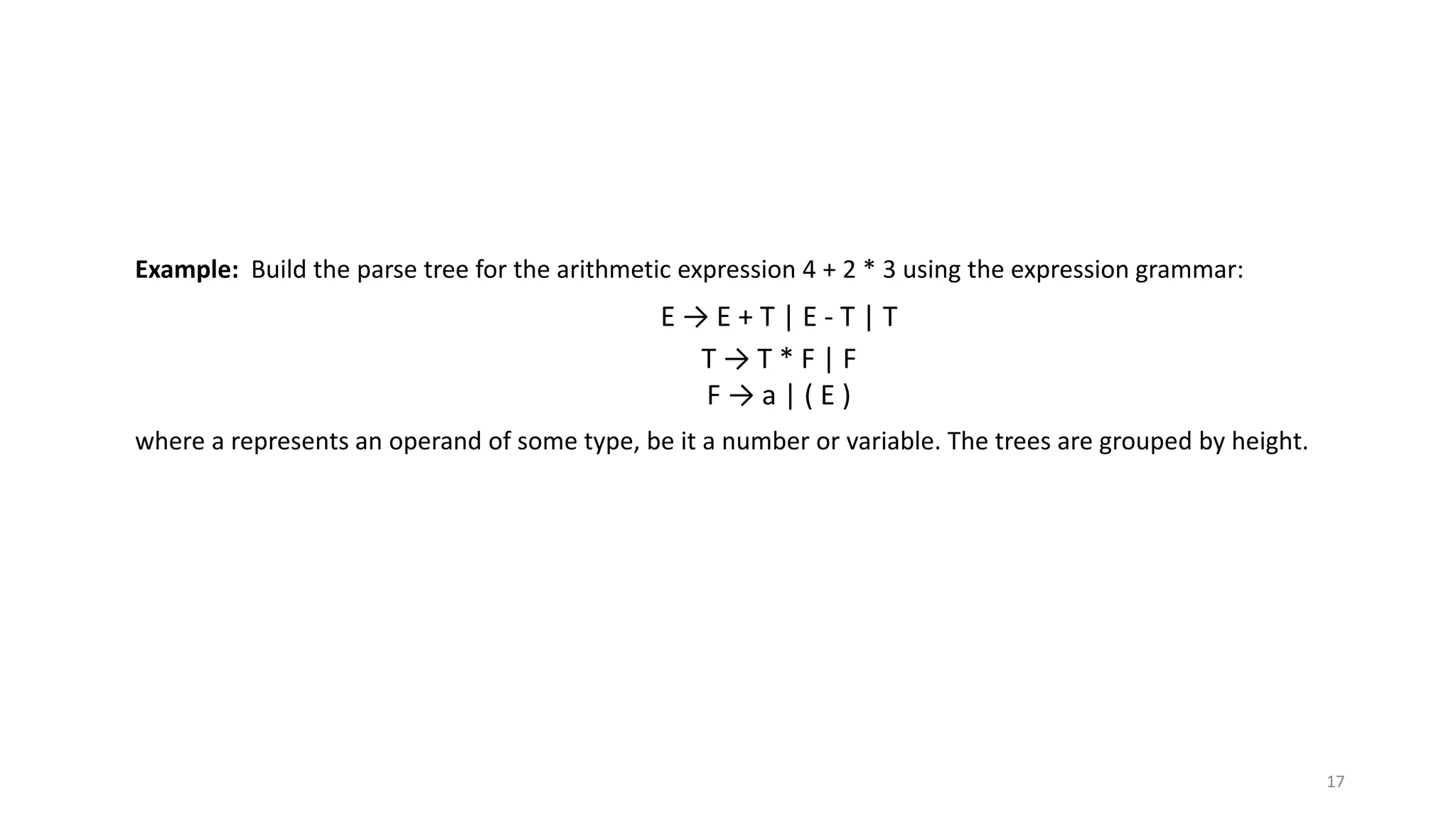This document discusses derivation, ambiguity, and parsing in compiler design. It contains the following key points:
1) A derivation is a sequence of production rules that derives an input string from the start symbol. Left-most and right-most derivations refer to replacing symbols from left to right or right to left.
2) A grammar is ambiguous if it has more than one parse tree for at least one input string. Top-down parsing builds parse trees from the root node down.
3) Examples show left-most and right-most derivations and how they can result in ambiguous or unambiguous parses for different input strings based on the grammar rules.
